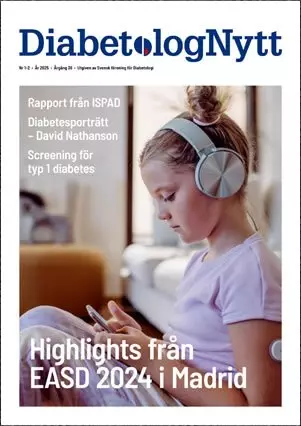- Guidelines from the European Society of Cardiology and the European Association for the Study of Diabetes recommend that HbA1c and fasting blood glucose be used as the initial studies for the diagnosis of diabetes.
- Optimal medical management should be considered as preferred treatment in patients with stable coronary artery disease and diabetes.
Clinicians should use glycated hemoglobin (HbA1c) to diagnose diabetes, according to new recommendations in diabetes, prediabetes, and cardiovascular disease from two European societies.
The new guidelines from the European Society of Cardiology and the European Association for the Study of Diabetes state that if a patient doesn’t have diabetes on the basis of an HbA1c reading, then he or she should be screened with an oral glucose tolerance test (OGTT).
”We have simplified the diagnosis because many patients may be disclosed with HbA1c, limiting the numbers who need the lengthier test,” Lars Ryden, MD, PhD, professor emeritus of the Karolinska Institute in Sweden and representative of ESC, said in the statement. ”But a normal HbA1c does not rule out diabetes in high-risk patients, who need to have an oral glucose tolerance test.”
The new guidance was presented by Ryden and co-author Peter Grant, MD, of the University of Leeds in England at the ESC meeting in Amsterdam, and published online in the European Heart Journal and on the ESC’s website. Grant represented EASD.
Silvio Inzucchi, MD, director of the Yale Diabetes Guidelines, who was co-author on the last joint edition of the American Diabetes Association and EASD guidelines, said he doesn’t agree with the follow-up OGTT recommendations.
”While they may diagnose more patients this way, there are no data that [patients] diagnosed by OGTT only, with an A1c less than 6.5%, need anything additional done to them,” he said. ”So this part of the guideline is a bit ahead of the data.”
Cardiovascular risk assessment has been simplified from the last guideline update in 2007, the researchers said. Now, all patients with diabetes are considered to be at high cardiovascular risk, and those who have both diabetes and cardiovascular disease are at very high risk for a recurrent cardiovascular event.
Ryden said the guidance has done away with the use of risk engines for assessing potential heart and vascular problems, because these ”accumulate risk factors and produce a low, medium, or high risk score [that is] less useful for patients with diabetes.”
Recommendations regarding revascularization in diabetic patients have changed, too. It is now recommended that patients with coronary artery disease but no complex coronary lesions should have medical therapy first, instead of interventions.
”In former days, we were quick to do coronary interventions, but based on new trial data we now do not advocate bypass surgery and coronary angioplasty until medical therapy has been tried,” Ryden said in the statement.
But for those who do need an intervention, such as those with several or complex coronary artery stenoses, bypass surgery should be offered before percutaneous coronary intervention (PCI), according to the guidance, as new data has shown better morbidity and mortality outcomes with bypass surgery.
”New trial data clearly show that morbidity and mortality are superior with bypass surgery compared to coronary [angioplasty], even with the use of drug-eluting stents,” Ryden added.
The new guidance also calls for individualization of targets for blood pressure and glucose, as well as greater involvement of patient preferences in decision-making. It also updates specific blood pressure targets, increasing the general recommendation for those with diabetes to 140/85 mm Hg from 130/80 mm Hg in 2007.
The focus on individualizing treatment is similar to recommendations put forth by U.S. endocrinology groups, including the American Diabetes Association and the American Association of Clinical Endocrinologists.
And clinicians should prioritize weight stabilization over reduction, as well as recommend against drugs that raise high density lipoprotein (HDL) cholesterol, which data have shown to be ineffective, the researchers wrote.
The guidelines also recommend against aspirin in patients with diabetes, unless they also have cardiovascular disease. In that case, the novel platelet stabilizing drugs may be more effective, they wrote.
Primary source: European Heart Journal
Source reference: Ryden L, et al ”ESC guidelines on diabetes, prediabetes, and cardiovascular diseases developed in collaboration with the EASD” Euro Heart J 2013; DOI: 10.1093/eurheartj/eht108.
Läs nedan artikel 63 sidor i sin helhet på
http://eurheartj.oxfordjournals.org/content/early/2013/08/29/eurheartj.eht108.short
ESC Guidelines on diabetes, pre-diabetes, and cardiovascular diseases developed in collaboration with the EASD
The Task Force on diabetes, pre-diabetes, and cardiovascular diseases of the European Society of Cardiology (ESC) and developed in collaboration with the European Association for the Study of Diabetes (EASD).
Kommentar i Sverige inför vi 140101 också HbA1c 48 mmol/mol eller högre som alternativ för diagnstik till Faste-P-Glukos och 2 timmarsvärde av glukos. Se mer i sista numret av DiabetologNytt uppe till höger på dagensdiabetes.se
Nyhetsinfo
www red DiabetologNytt





